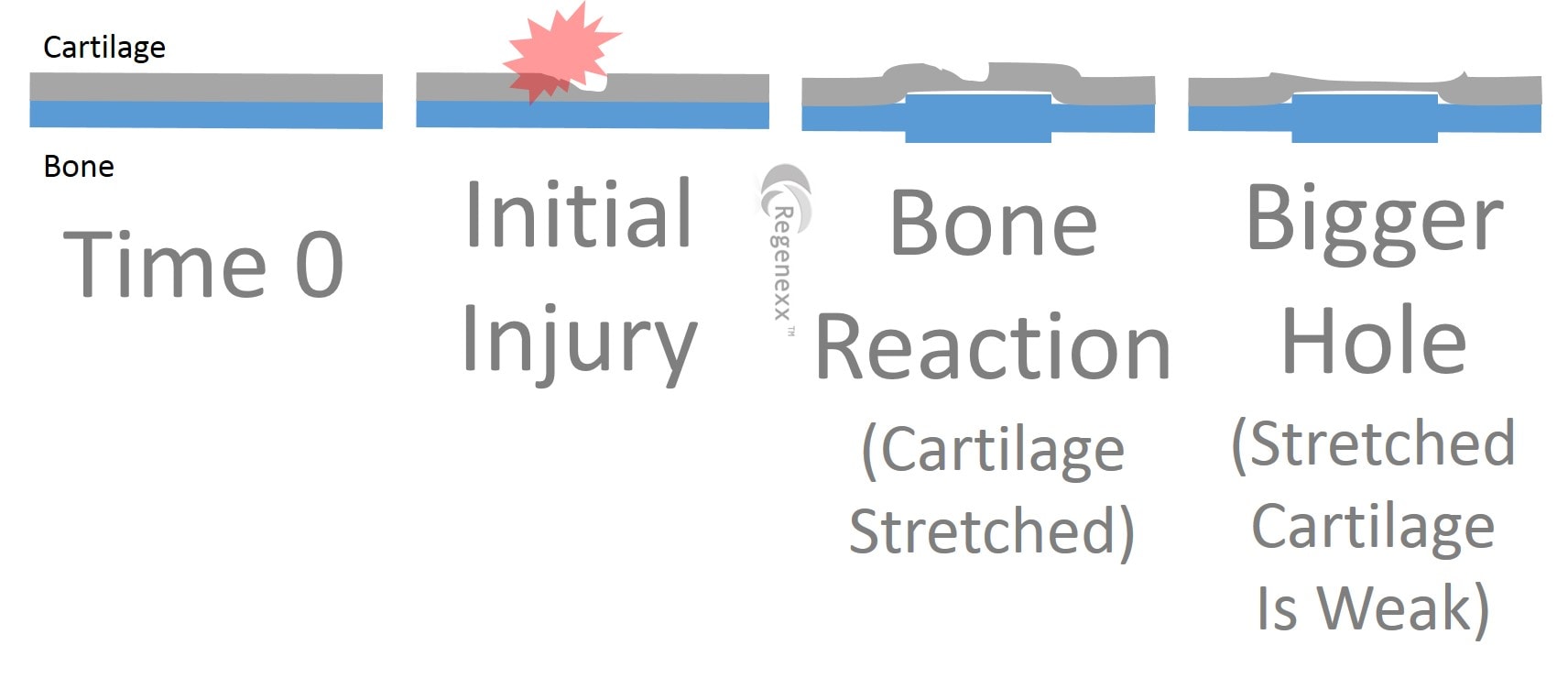A Hole in Cartilage causes Bone to React and Stretch the Cartilage Resulting in Arthritis
A hole in cartilage can happen when trauma causes too much force to be placed on one spot. It’s been assumed for ages that this then leads to weak cartilage that wears away quicker, thus causing arthritis. However, some researchers last week turned that concept on it’s head. In their model, a hole in cartilage causes changes in the bone which leads to bad cartilage. How does this work?
I have illustrated their structural findings above to make it all easier to understand. There’s an initial injury to cartilage. That’s followed by more stress on the bone causing an important signaling molecule (TGF-beta) to tell the bone to react. This leads to a bone thickening which then stretches the cartilage above the thicker bone. This then leads to weaker cartilage that wears away. The scientists were able to dampen the TGF-beta signal and reduce the bone thickening and thus reduce the cartilage stretching and wear. It should be noted that the team initiated the cartilage injury by causing the animal joint to become unstable. Sound familiar? This is a basic tenant of our Orthopedics 2.0 philosophy. Before trying to fix cartilage you have to get the joint stable.
The upshot? You also need to make sure the bone doesn’t over-react! Some doctors are already treating cartilage injuries with bone marrow lesions this way. We have been injecting stem cells into the subchondral bone and others have been injecting bone cement (which we’re not keen on as it kills local bone cells). The researchers also have an antibody to TGF-beta that takes out the extra signal when injected into bone. Any way you go about it, treating the cartilage above in some patients may necessitate treating the bone below!

NOTE: This blog post provides general information to help the reader better understand regenerative medicine, musculoskeletal health, and related subjects. All content provided in this blog, website, or any linked materials, including text, graphics, images, patient profiles, outcomes, and information, are not intended and should not be considered or used as a substitute for medical advice, diagnosis, or treatment. Please always consult with a professional and certified healthcare provider to discuss if a treatment is right for you.

